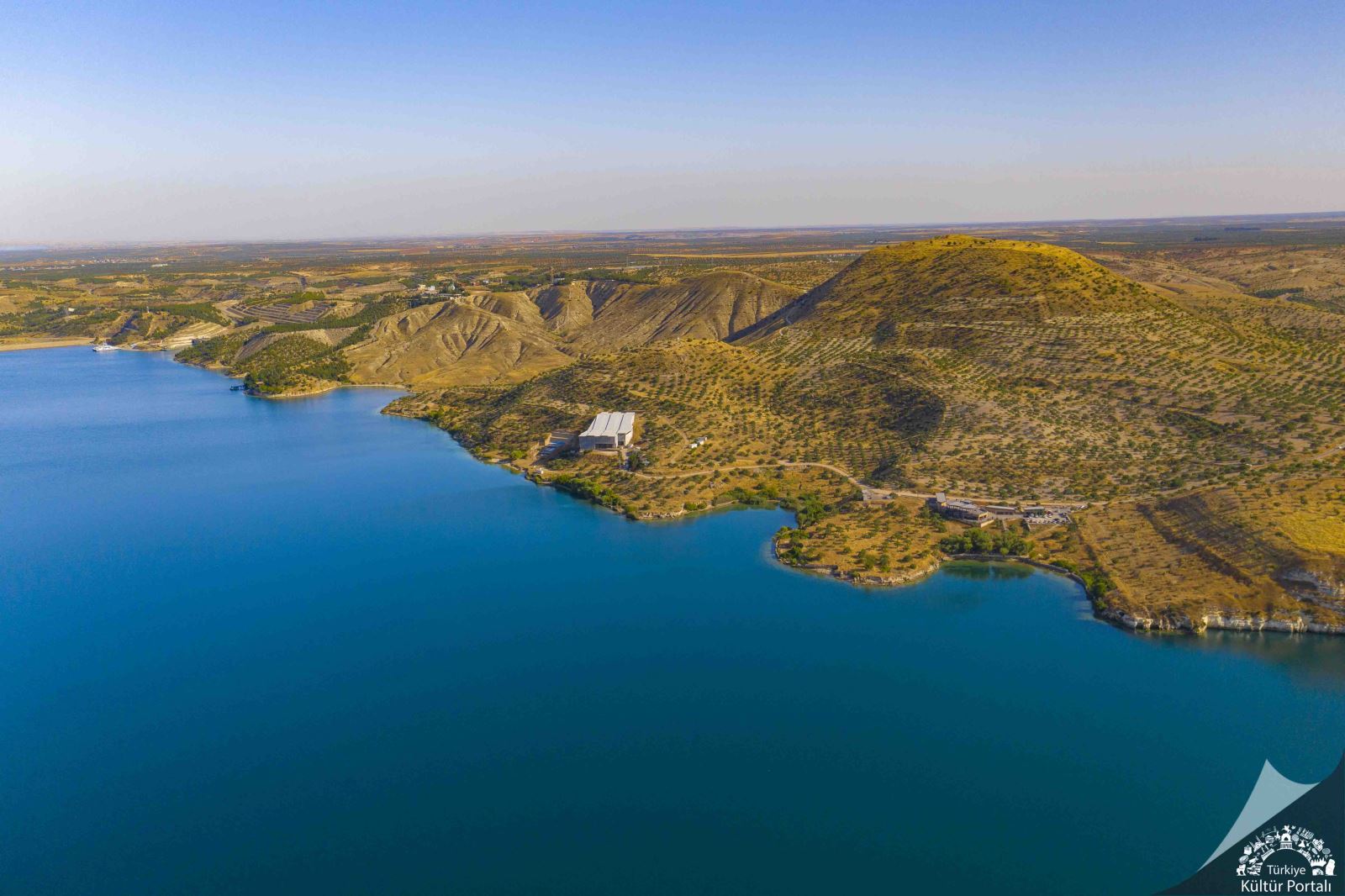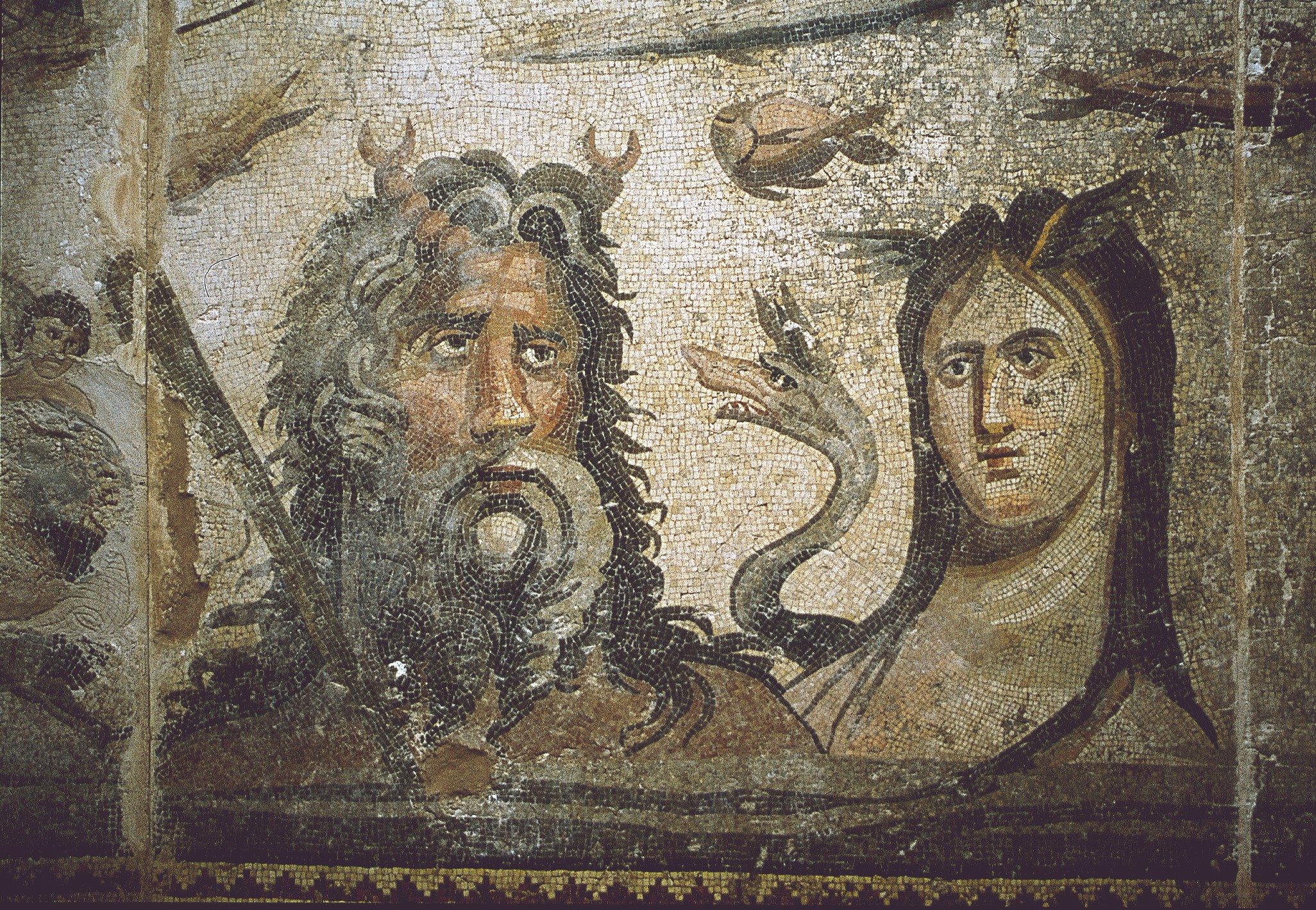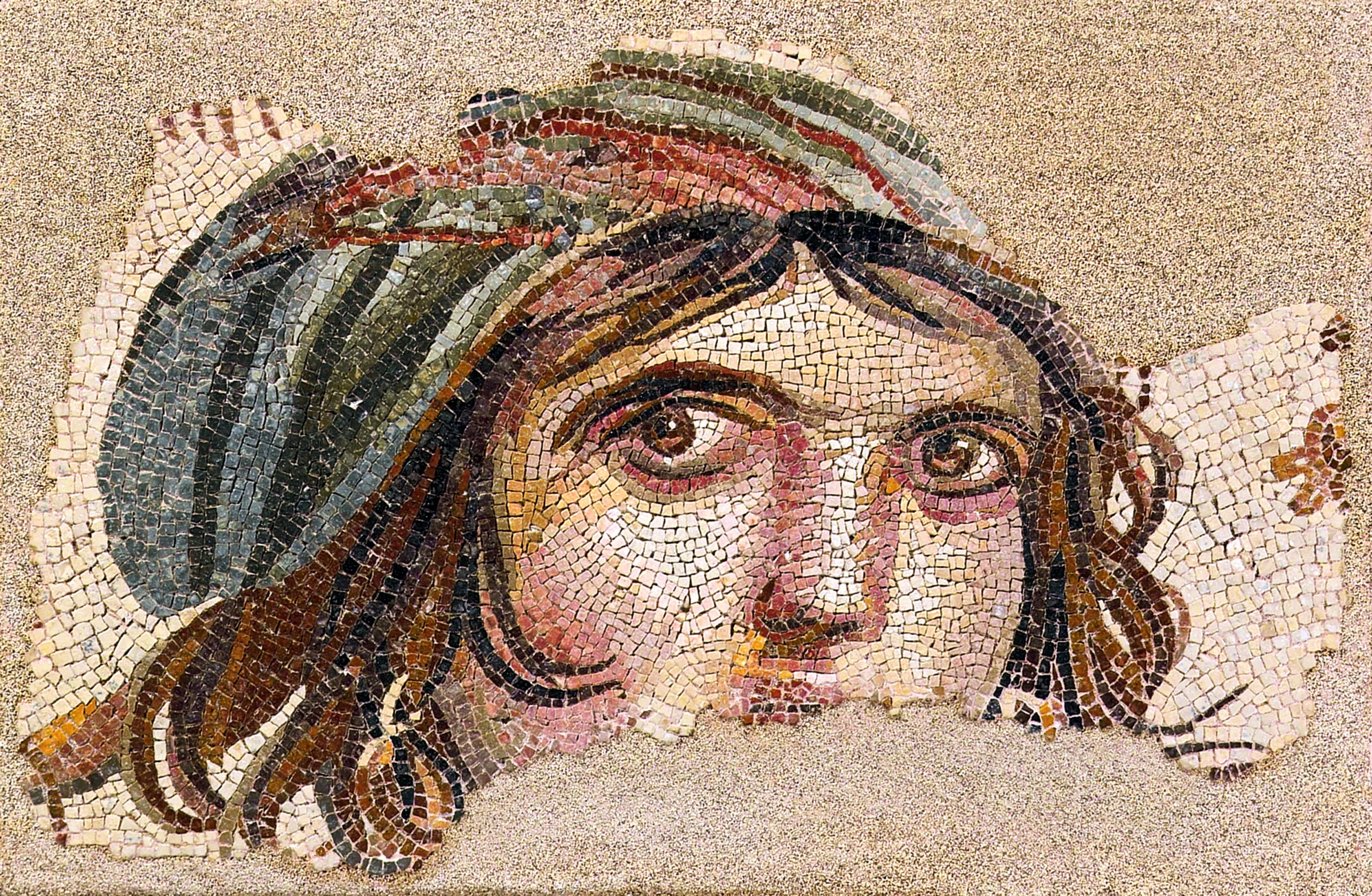Zeugma Ancient City or Belkıs is a multi-layered settlement located within the borders of Nizip district in the province of Gaziantep, on the western bank of the Euphrates River. Due to its physical geography, the city lies at the intersection of both east–west and north–south land and water routes. This strategic position played a decisive role in the city assuming military, commercial, and administrative functions.
The mosaics, frescoes, bronze sculptures, and over 100,000 seal impressions (bullae) unearthed in the settlement provide valuable insights into the city’s administrative structure, artistic perception, and daily life. Zeugma is not merely a city of mosaics; it is also regarded as a holistic model of an ancient city shaped at the crossroads of art, administration, religion, and commerce. In this respect, it holds a unique place in Anatolian archaeology.

Belkıs/Zeugma (Photo: Türkiye Kültür Portalı)
History
Zeugma Ancient City was founded in 300 BCE by Seleucus I Nicator, one of the generals of Alexander the Great. On the western bank of the river, he established the city of Seleukeia, named after himself, and on the eastern bank, he built Apameia, named after his wife, Apama. These two cities were connected by a strategic bridge and, over time, became one of the most significant settlements in the region. From 31 BCE onwards, the city came under the control of the Roman Empire and received the name “Zeugma” during this period.
During the Roman era, Zeugma was not only a military and commercial center but also held cultural importance. The Roman Fourth Legion (Legio IV Scythica) was stationed in the city for an extended period, which led to its development as a garrison town. As a crossing point of the Euphrates, Zeugma served as a hub for trade between the East and the West. With a population of 80,000, it became one of the largest cities of its time.
In 256 CE, Zeugma was largely destroyed by an attack led by the Sasanian king Shapur I. Fires broke out in the city, the population declined, and it lost its former glory. After this event, Zeugma never regained its previous prominence. However, archaeological findings indicate that some level of settlement persisted even after the destruction.
Modern interest in Zeugma began in the 18th century with visits by travelers and researchers. In the 19th century, British traveler William F. Ainsworth visited the area, and American researcher J. R. Metheny was the first to identify the site of Zeugma in the village of Belkıs. In the early 20th century, German archaeologist Dr. Jörg Wagner compiled archaeological, numismatic, and epigraphic data from the region, scientifically confirming the true identity of the city.
In the 1990s, with the construction of the Birecik Dam, much of the ancient city was at risk of being submerged. As a result, emergency rescue excavations were launched with the support of the Ministry of Culture and various international institutions. These excavations revealed hundreds of mosaics, frescoes, sculptures, and especially seal impressions (bullae) from archival documents in Zones A and B. With over 100,000 bullae discovered, this represents a world record in this field.
Since 2005, the excavations have been conducted systematically under the supervision of Prof. Dr. Kutalmış Görkay, a faculty member of the Department of Classical Archaeology at Ankara University. These efforts are significant both for the advancement of archaeological science and for the preservation and promotion of Zeugma’s cultural heritage.

Belkıs/Zeugma (Photo: Türkiye Kültür Portalı)
Architectural Features
Belkıs/Zeugma Ancient City is built on a terraced topography, adapting its spatial organization directly to the geographical conditions. The settlement area stretches from the bank of the Euphrates River to the foothills of Belkıs Hill, which rises 300–350 meters to the west. In this direction, the city is arranged on terraces ascending the slopes.
The city plan clearly separates the acropolis, public buildings, residential areas, and the necropolis. On top of the acropolis are the remains of the Temple of Tyche, depicted on Zeugma coins. This temple was likely dedicated to Tyche, the goddess of fortune and abundance. The northern part of the acropolis is surrounded by the legion's headquarters and administrative buildings, while residential neighborhoods are located to the east and northeast, and the necropolis lies in the southern and western parts.
Among the most striking examples of residential architecture are the hillside villas. With commanding views of the landscape, these villas served both aesthetic and social prestige purposes. They frequently featured mosaic floors, courtyards, shallow pools, and colonnaded courtyards. The mosaics depict mythological scenes, geometric patterns, or representations of daily life, indicating that the architecture was not only functional but also symbolic.
The city’s infrastructure includes colonnaded streets, an agora, a theater, baths, and fountains—elements dating to the Roman period that reflect both administrative and socio-economic aspects of urban organization. Remains of sewage lines, olive oil workshops, and shop structures provide further information about production and distribution processes.
The structures in Belkıs/Zeugma were primarily built using rubble stone bonded with lime mortar and occasionally dressed stone. These materials were chosen for their durability and availability and were complemented by aesthetic architectural elements, especially in public buildings. Many structures remain underground, and continued systematic excavation will help document broader parts of the city fabric.
Findings
Excavations at Zeugma have uncovered numerous portable cultural artifacts shedding light on the city’s social, cultural, and economic structure. These include mosaics, sculptures, frescoes, bullae, metal objects, architectural decorations, and coin specimens.
The most notable group of artifacts consists of Roman-era floor mosaics. These mosaics depict mythological figures such as Dionysus, Oceanus and Tethys, Achilles, and Aphrodite, and stand out for their use of perspective, shadow, color gradation, and three-dimensional effects. Some of the mosaics have been preserved in situ, while others have been transferred to the Zeugma Mosaic Museum in Gaziantep.

Oceanos and Tethys Mosaic (Photo: T.C. Sanayi ve Teknoloji Bakanlığı Kalkınma Galerisi)
The Gypsy Girl mosaic is one of the most famous artifacts excavated from Zeugma. Created using small tesserae with gradient color transitions, it features 13 different color tones—an exceptionally rare technique in ancient mosaic art. The mosaic achieves a striking three-dimensional effect, particularly in the shadows around the eye sockets and cheekbones. Today, it is exhibited in a special gallery and serves as a visual symbol of Zeugma.

Gypsy Girl (Photo: T.C. Sanayi ve Teknoloji Bakanlığı Kalkınma Galerisi)
In the field of sculpture, the bronze statue of Mars stands out. Measuring approximately 1.60 meters in height, this statue depicts the God of War holding a spear in one hand and a bundle of plants in the other. Its eyes are inlaid with gold and silver, making it one of the few life-size bronze examples that showcase the technical prowess of Roman sculpture.
The seal impressions (bullae) unearthed during excavations provide crucial evidence of Zeugma’s bureaucratic system and archival structure. Made of baked clay, these bullae number around 100,000—forming the largest collection of their kind. They feature depictions of gods, emperors, mythological creatures, inscriptions, and symbols.
The bullae serve as strong evidence that Zeugma had a highly organized administrative record-keeping system. Documents and dispatches were sealed and monitored, and these procedures were formally recorded. The location of the archive buildings near the agora suggests that sealing functions were closely linked to trade and governance. In this regard, Zeugma can be seen as a Roman archival city at the center of correspondence, record-keeping, and documentation networks in the region.
In addition, many portable finds such as frescoes, bronze lamps, glass and ceramic objects, coins, funerary steles, reliefs, and small figurines have been uncovered. The frescoes, typically found on the interior walls of residences, portray mythological or everyday scenes. The funerary steles and reliefs provide further insights into the city’s burial practices and artistic preferences.


